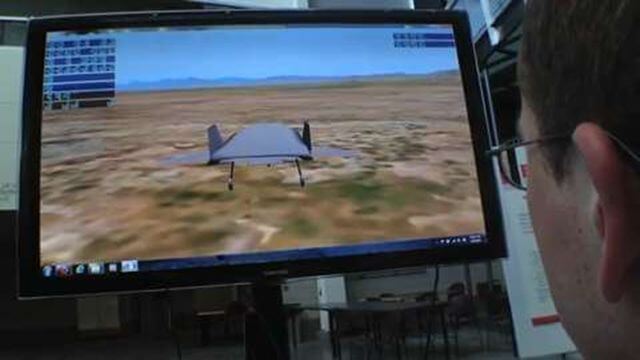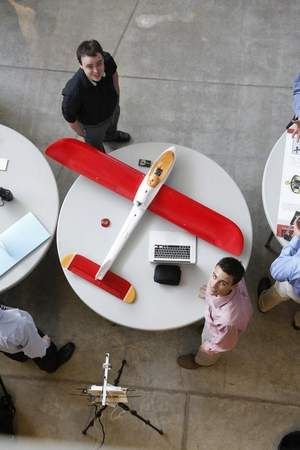At Iowa State University Professor Tom Gielda has incorporated X-Plane into the aerospace engineering capstone project. Professor Gielda averages 80 students per semester in this Senior Design course. These students use X-Plane in the class to demonstrate the flight capabilities of their designs prior to wind tunnel and flight tests.
Tom was first exposed to X-Plane after researching how to utilize flight simulators in the design process and several of his colleagues at Boeing recommended X-Plane as a viable learning tool. Iowa State Senior Design students use X-Plane version 10 throughout the semester, beginning with conceptual design, control system sizing, and flight validation phases. Their grades are based on the results in flying their designs in X-Plane.
Senior Design Students extensively utilize Plane Maker, a program bundled with X-Plane enabling users to design their own aircraft. Once all the physical specifications of the airplane have been entered into Plane Maker, the X-Plane simulator will then predict how the airplane will fly in a real environment. The students are required to translate the aero performance of the aircraft, using CFD techniques, into the blade element models used in Plane Maker. The students then fly the mission profile to evaluate the airplane’s handling characteristics. In addition, the software is used to size control surfaces and deflection rates.
For those not familiar with X-Plane and Plane Maker Professor Gielda shared his thoughts as follows, “X-Plane’s program, Plane Maker, is a powerful tool allowing design engineers to look at the integrated design of the aircraft. All too often companies develop the aircraft in functional silos. This development process takes too long and does not allow synergies to be explored and exploited. X-Plane is the perfect learning tool for the engineers of today and tomorrow.”
Professor Gielda and his students recall one of their most humorous memories, when the chief test pilot from Boeing Vertol could not fly a VTOL aircraft the students developed. The Boeing test pilot was especially frustrated when the student pilots took off vertically and then transitioned smoothly to horizontal flight. The students’ grades for that semester were most likely A+!
Professor Gielda would like to combine ISU efforts with those of others allowing for more robust aero-performance models. Utilizing the blade element theory for more complex flight effects, such as supersonic and hypersonic flight, would enhance the learning environment for his students. His students would then be able to develop high fidelity models which can incorporate the rich data generated from CFD and wind tunnel testing.
Randy Witt, X-Plane Partner & Customer Service Representative, states, “Anyone that has X-Plane can download the virtual versions of aircraft or can design and fly the airplane of their dreams through Plane Maker. Aircraft manufactures can build aircraft designs in Plane Maker, test fly the design in X-Plane, and then upload the design to the internet for customers to experience.”
What better way to teach more people about airplanes, for companies to create potential customers, and to increase the flight currency of those who already fly than using X-Plane and Plane Maker! Iowa State University Senior Design students couldn’t agree more.



